The idea of personalized marketing is not exactly new, but marketers have more tools, techniques, and data at their disposal than ever before, giving them everything they need to truly achieve the ultimate goal of delivering the right content at the right time in the right place. With all of the options available—and the endless amount of data at marketers’ fingertips—we asked 10 digital experts from across the industry:
- In this current age of digital and data, how can healthcare marketers ensure they are delivering an optimal customer experience tailored to fit each target audience without worrying about violating privacy issues or stepping on MLR’s toes?
- What targeting techniques (segmentation, retargeting, geofencing, contextual, behavioral, etc.) are the best to ensure you are reaching the right audience, with the right message, at the right time? How do you determine what approach is right for your brand?
- Pharma has been slower to adopt programmatic than other industries. Are the industry’s concerns warranted, or can programmatic become an effective tool for pharma?
- How can marketers develop a content marketing strategy that is sure to deliver high customer engagement?
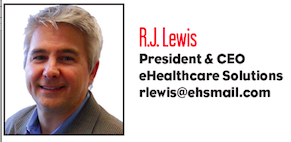 Customers’ expectations on companies and brands to deliver relevant, timely, and helpful messaging are increasing. The good news: Marketers’ ability to deliver “helpful relevance” in a digital environment has never been stronger.
Customers’ expectations on companies and brands to deliver relevant, timely, and helpful messaging are increasing. The good news: Marketers’ ability to deliver “helpful relevance” in a digital environment has never been stronger.
The vision of one-to-one marketing becomes closer to reality every day. Lead by Facebook’s forays into data in exchange for value, publishers have continued to evolve their privacy policies in a manner that allows for more use of user data in exchange for their valuable content offerings. This benefits the marketers who are positioned to act and are willing to push the tolerance of MLR.
Armed with a strong understanding of who the customer is, and some insight on their possible objections and concerns for using your product, brands are empowered to both educate and inform where appropriate. Doing so requires a fundamental shift from brand-focused thinking, which encourages constant repeat exposures and a “use our brand every time” attitude, to customer-focused thinking, which encourages well-timed, personalized, appropriate, helpful messaging and a “here’s a perfect opportunity where our brand will deliver a better outcome for you” attitude.
Choosing the Best Targeting Techniques
Determining the optimal targeting methods for your brand starts with an understanding of your customer’s journey and a mapping of the ideal communication points along that journey. When can your brand be of most service to each customer? Where are the current knowledge gaps that require customer education? What are the best channels for intervention? What are the best targeting techniques within those channels? How can the brand best make itself available as a partner throughout the customer’s journey? These are the types of questions that must be answered before choosing a channel or a targeting methodology. By the way, why not consult with your customers on answering these questions? Following the platinum rule: “Do unto others as they want done unto them.”
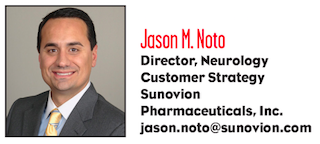 In order to utilize optimal targeting techniques, we first need to conduct a thorough assessment to acquire a sound understanding of healthcare professional attitudinal and prescribing behaviors. From there, an in-depth segmenting of our target audience based on quantitative, qualitative, and channel affinity data allows us to deliver individualized, promotionally relevant content through the ideal communication medium.
In order to utilize optimal targeting techniques, we first need to conduct a thorough assessment to acquire a sound understanding of healthcare professional attitudinal and prescribing behaviors. From there, an in-depth segmenting of our target audience based on quantitative, qualitative, and channel affinity data allows us to deliver individualized, promotionally relevant content through the ideal communication medium.
Following segmentation, additional tertiary targeting efforts across both HCP and consumers can be effectively overlaid by way of geotargeting technology to capitalize on the opportunities present at the point of care. A hybrid approach featuring list-matched, online, and offline promotion allows for the optimization of online promotion outreach via a diverse, multichannel marketing mix.
Programmatic Gives Pharma What it Wants
Programmatic has already become an effective tool for the pharma organizations that have embraced it, as it furthers our long-standing desire for increased transparency into the digital behavior of our customers. Additionally, the use of programmatic allows us to control message content, frequency of delivery, and eliminate suboptimal budget utilization. Similar in nature to the hyper-targeting of customers via offline media, programmatic allows for the same precision targeting within the digital space.
As an industry, I think pharma has been slower to adopt programmatic due to a lack of understanding of its underlying functionality, combined with concerns surrounding customer privacy. The manner in which media is purchased programmatically is not unlike direct target list buys that brands regularly purchase directly from offline publishers. Once organizations fully understand the methodology of programmatic, lingering concerns surrounding customer privacy issues are generally unfounded since the industry applies strict guardrails protecting privacy.
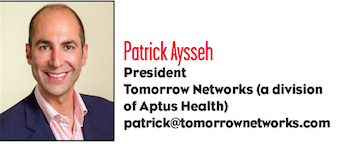 For many years, marketers have interpreted users’ digital footprints—their website visits and other online activities—to understand how to best target them. Now with mobile, we can leverage “real world” signals and behaviors—where consumers go and what they do in their daily lives—to create more scalable, more meaningful, and more accurate segmentation and campaign targeting that people actually appreciate and value.
For many years, marketers have interpreted users’ digital footprints—their website visits and other online activities—to understand how to best target them. Now with mobile, we can leverage “real world” signals and behaviors—where consumers go and what they do in their daily lives—to create more scalable, more meaningful, and more accurate segmentation and campaign targeting that people actually appreciate and value.
Let’s say a pharma company has a new diabetes medication launching in a crowded market. As a foundation for the mobile advertising campaign for this brand, they may want to start by developing a heat map of the U.S. based on multiple criteria including regional diabetes prevalence rates, Rx market volume, managed markets access, demographic data, and historical ad performance metrics. Then, they can execute a hyper-targeted point of care and zip code level geo-targeting campaign to maximize reach among these target consumers—based on their real-world activities.
Targeting Consumers Based on Lifestyle
As the campaign progresses, they can gain even more insights into the people who received the ad creative by leveraging consumer data from a real-time analytics company such as Neustar. This highlights, for example, which segments are leading a healthier lifestyle (based on interactions with their physician, the foods they eat, and more) as opposed to a more sedentary lifestyle. Such rich data would allow marketers to further optimize the campaign by segmenting the original consumer groups and hyper-target them at places like gyms and fast food restaurants with new creative that addresses their lifestyles.
This disciplined real-world approach easily scales into areas that go far beyond the pill, including food, lifestyle, pharmacy/OTC, and other sectors. After all, personalized, relevant messaging is something that all marketers seek—and what today’s savvy consumers expect.
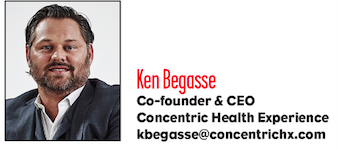 An overly simplified description of customer engagement is: A customer insight-driven content strategy delivered through a customer-driven media plan. This is why programmatic media has real promise, and with the right approach, it can be a highly effective marketing tool for pharma and their agencies. However, while exciting, the reality is that creating the “campaign of one” for every user might be too far of a reach for regulated industries, especially healthcare. To move forward with confidence, marketers must create a safe environment for brand engagement that includes programmatic by utilizing a few proven methods:
An overly simplified description of customer engagement is: A customer insight-driven content strategy delivered through a customer-driven media plan. This is why programmatic media has real promise, and with the right approach, it can be a highly effective marketing tool for pharma and their agencies. However, while exciting, the reality is that creating the “campaign of one” for every user might be too far of a reach for regulated industries, especially healthcare. To move forward with confidence, marketers must create a safe environment for brand engagement that includes programmatic by utilizing a few proven methods:
1. Know where you want to play. Have a brand focus and find approvable and relevant white lists of sites for deployment.
2. Mix it up. Utilize buying audience segments, contextual targeting, and page targeting to power your content-driven strategy.
3. Never stop exploring new territory. Before you expand beyond a pre-approved list, perform an analysis of the most visited sites per audience segment, perform qualitative research on viability, and present a business case for expanding beyond.
4. Refresh content and have stopgaps. Nobody wants to be stalked, especially with the same content. Make sure you expire content that doesn’t drive action, and be sure to analyze every engagement based on each segment. Don’t be afraid to kill a segment or rethink your approach based upon what you see.
Even the most simplistic programmatic plan can drive ROI. So the question is, what’s stopping you?
 Tailoring the experience to fit each customer is actually not that complicated. Just be transparent with your intentions and deliver value. If you let someone know exactly how you are going to be using data, they are more likely to let you have it. Don’t make any assumptions either—cover your bases. This means have consent forms, end-user license agreement (EULAs), and make the most of anonymized data.
Tailoring the experience to fit each customer is actually not that complicated. Just be transparent with your intentions and deliver value. If you let someone know exactly how you are going to be using data, they are more likely to let you have it. Don’t make any assumptions either—cover your bases. This means have consent forms, end-user license agreement (EULAs), and make the most of anonymized data.
Then it’s about delivering value. An overabundance of data won’t help you if you don’t know what questions to ask. Data needs to be analyzed, and like anything else, the questions you ask determine the answers you will receive. So ask the questions that will help you deliver value. Ignore vanity metrics and really dig deep into what can improve your customer’s experience. Have the mindset that if they give you their data, then it’s your job to deliver on the promise.
How to Deliver the Best Content Marketing Strategy
Start by talking to your customers. You’ll never really determine what your customers need without them so set up interviews and focus groups. Create surveys and take them out to lunch. Ask them what problems they have and what they struggle with. Ask about the last time they had a win and the last time they had a loss.
Don’t take your customers’ responses at face value. What people say and what they do are often different so it’s critical to verify, verify, and verify. Watch and observe them. Look at the comments section of the articles they share, visit their Facebook and LinkedIn pages and derive your own conclusions. Then create content that they can actually use. Give them something to engage with. Don’t just share information—share solutions. It’s important to be consistent because content marketing is about commitment. Commit to delivering value.
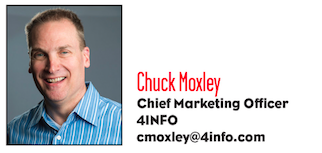 Marketers have a multitude of targeting approaches that they can, should, and do employ, but many—especially those new to mobile—get too focused on one method, such as location or contextual targeting. Fortunately, targeting technologies and methodologies have evolved and improved over the last few years, enabling brands to connect key data sets to reach and engage with relevant health audiences across display, video, mobile, and beyond, and achieve the kind of large-scale campaigns national brands expect—all while maintaining HIPAA compliance.
Marketers have a multitude of targeting approaches that they can, should, and do employ, but many—especially those new to mobile—get too focused on one method, such as location or contextual targeting. Fortunately, targeting technologies and methodologies have evolved and improved over the last few years, enabling brands to connect key data sets to reach and engage with relevant health audiences across display, video, mobile, and beyond, and achieve the kind of large-scale campaigns national brands expect—all while maintaining HIPAA compliance.
More specifically, brands are increasingly leveraging predictive data models to identify and serve media to consumers who are likely to treat within a particular condition category or with a particular drug brand. When this predictive data is combined with targeted mobile programmatic media buying, brands reach the most relevant consumers while avoiding less qualified counterparts—driving greater efficiency and measurable profit impact.
No Need to Worry About Programmatic
Pharma has been slower to embrace programmatic media buying than other verticals due to two legitimate concerns. One is consumer privacy. Health data is universally regarded as the most sensitive category of consumer data, and HIPAA strictly prohibits advertisers from leveraging re-identifiable personal health data for marketing purposes.
The other is the ability to scale programmatic media buys effectively. Pharma marketers fear that by investing in programmatic’s promise of greater audience precision and quality, they will invariably compromise the quantity of relevant health consumers they can reach.
However, emerging data-driven technologies have rendered the industry’s skepticism about the power of programmatic obsolete. By using sophisticated audience models fueled by predictive consumer data (not actual health data) and applying these models across the breadth of the digital landscape, pharma advertisers can adhere to HIPAA’s privacy rules and achieve targeted scale—all while maximizing the efficiency and impact of their campaigns.
 Different audiences have wildly diverse media diets and engagement preferences, and the media landscape is only getting more complex. While traditional channels have gotten away with distilling impact down to GRPs against their targeted demographic, essentially turning media planning into a math problem, digital marketers have a much more complicated decision tree to navigate. While no one tactic will be a sure-fire winner for every campaign, we’ll always be able to either mine existing data or conduct additional research to find nuggets of insight that will turn a media plan into a successful one.
Different audiences have wildly diverse media diets and engagement preferences, and the media landscape is only getting more complex. While traditional channels have gotten away with distilling impact down to GRPs against their targeted demographic, essentially turning media planning into a math problem, digital marketers have a much more complicated decision tree to navigate. While no one tactic will be a sure-fire winner for every campaign, we’ll always be able to either mine existing data or conduct additional research to find nuggets of insight that will turn a media plan into a successful one.
For example, audience analysis might suggest that a high frequency, multichannel, context-agnostic campaign will be most effective for a younger audience, while leveraging the credibility of a trusted publishing platform to distribute co-branded content might make the most sense for an older audience. Addressable TV, which links prescription and set-top-box data to allow TV spots to be targeted at the household level, can be an effective tool for advertisers looking to harness the impact of TV while staying tight to a niche audience. Now that smartphones and tablets have become all but ubiquitous, cross-device retargeting allows for efficient extension of campaign frequency against nearly any target.
Go Beyond the List-match Approach
For professionals, while sites such as Medscape have been offering list-matching based on registration data for years, Big Data has enabled networks and demand-side platforms (DSPs) to message physicians anywhere they go online, whether that be in their EHR system or on NYTimes.com. But marketers can also go a step beyond that to not only leverage that network-based list-match approach, but do so with full-page takeovers to generate maximum visibility of key messages. In more conventional settings, adding the efficiency of dynamic creative builds helps decrease message fatigue, enabling even higher frequencies without decreased performance.
 When it comes the choosing the best approach for your brand to ensure you are offering the optimal experience for each customer, one of the most important factors is having a deep understanding of your use cases, as they are often unique to your verticals. For example, in all countries other than the U.S. and Australia, companies are forbidden to market drugs directly to consumers so you can only market to HCPs. Therefore, a user accessing a website with product information must be verified as an HCP before gaining access to the site.
When it comes the choosing the best approach for your brand to ensure you are offering the optimal experience for each customer, one of the most important factors is having a deep understanding of your use cases, as they are often unique to your verticals. For example, in all countries other than the U.S. and Australia, companies are forbidden to market drugs directly to consumers so you can only market to HCPs. Therefore, a user accessing a website with product information must be verified as an HCP before gaining access to the site.
Once verified, the HCP can access product information and in some cases can even order samples. The information required to verify HCPs and the processes for verifying that information varies widely across countries and regions. HCP verification is therefore a complex problem for the pharmaceutical industry but an essential prerequisite for all marketing activities.
Verifying Your Audience
Pharma companies have a few options at their disposal to help verify who it is they are talking to. For instance, companies can use front-end registration forms to collect first-party data about their customers and then supplement that with third-party data post-registration. Companies can also work with third-party vendors to build out custom templates in order to accommodate specific market needs. This way they’re able to define required and optional fields in order to ensure they are getting the data necessary to create and deploy targeted, personalized marketing experiences to their audiences.
 The role of MLR review and managing the privacy of healthcare communications is a market reality that in some ways pushes digital marketers to be better than they have to be in other markets.
The role of MLR review and managing the privacy of healthcare communications is a market reality that in some ways pushes digital marketers to be better than they have to be in other markets.
Traditionally, the digital marketing industry has not, and does not, operate under the same level of constraints that exist for marketing to the auto industry, home improvement, travel, and entertainment industries. This is because digital grew up as direct response—one-to-one communication. The available direct response data that they have available from consumers visiting an auto dealer, buying a movie, or taking a luxury vacation is available from tracking the online experience. From publically available information about a consumer’s home square footage, voter registration, and CPG purchase data, programmatic digital advertising became reality. These kinds of data assets simply aren’t available to the marketer in as directly an actionable way with pharma under HIPAA or MLR compliance.
Getting By Without Direct Response Data
Ironically, what this leaves the digital marketer to work with is exactly what they are getting better at. Digital marketers are systematically identifying patterns of public demographics and (increasingly) location through modeling. Programmatic onboarding of publically available (compliant) offline data creates demographic baselines. Basic health informatics from the CDC and others contribute, as do health provider specialties and trade area demographics. Finally, the explosion in mobile makes 85% of the population targetable, which results in models that are more robust and actionable.
What we need to remember is that unlike television or print, digital is an iterative media. Models may find metadata patterns that can be applied at a local level and tested. They can then be adapted and refined over time to provide an effective level of prioritized unique user coverage that does not in any way challenge regulatory guidelines.
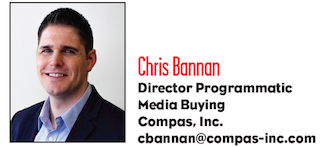 Programmatic has presented the pharma industry with new obstacles and opportunities since it emerged as a new media buying option. Most of the initial concerns from pharma marketers in regards to programmatic campaigns relate to the privacy of the HCPs and patients they are trying to target. But in actuality, from a privacy perspective at least, the way target audiences are identified is no different from some of the non-programmatic media buys many pharma marketers are doing now.
Programmatic has presented the pharma industry with new obstacles and opportunities since it emerged as a new media buying option. Most of the initial concerns from pharma marketers in regards to programmatic campaigns relate to the privacy of the HCPs and patients they are trying to target. But in actuality, from a privacy perspective at least, the way target audiences are identified is no different from some of the non-programmatic media buys many pharma marketers are doing now.
Programmatic just expands their buying options, allows them to be more selective, and have precise control over who is exposed to their ad, while at the same time providing the data that verifies they are delivering the right message to the right audience at the right time. It is a myth to believe that programmatic must use retargeting to identify individuals. It is also untrue that programmatic can only access remnant inventory, which really does not exist within endemic inventory.
Benefits of Programmatic
Once pharma marketers can get past their fears of programmatic, it is easy to see the potential benefits that it can provide to brands. Programmatic is an effective tool for pharma as it perfectly aligns with the desires of most marketers in the industry: To have the transparency into who they are reaching, eliminate wasted spend, control the messaging and frequency in real time to their target audience, and the ability to not only examine, but also provide the individual HCP level data to better measure prescription lift.








